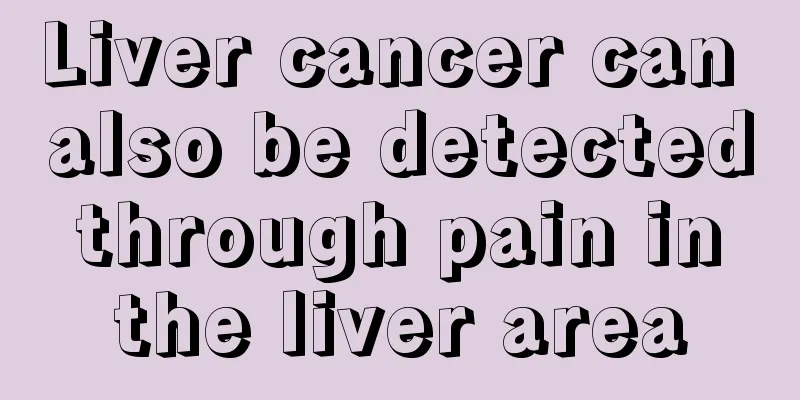Is frequent recurrence of cervical spondylosis due to inflammation?

|
Cervical spondylosis is a very common disease. The age of onset of cervical spondylosis is also relatively wide. Most people are around 40 to 60 years old, which is the peak period of cervical spondylosis. When cervical spondylosis becomes inflamed, it can cause cervical pain, cervical stiffness, and carotid artery sclerosis. How should we judge and treat this recurring attack? Causes A review of the causes of cervical spondylitis Cervical spondylitis is a common disease with a peak incidence in people aged 40-60 years old and a 100% incidence rate after the age of 70 years old. But now it is gradually becoming younger. The occurrence of cervical spondylosis is closely related to acute and chronic injuries of the cervical spine, occupational characteristics, and personal physique including genetic traits. In addition, personal living habits and eating habits have a certain influence. The proportions of various types of cervical spondylitis are as follows: radiculitis accounts for 50%-60%, vertebral artery type accounts for 20%-25%, sympathetic nerve type accounts for 3%-5%, and spinal cord type accounts for 10%-15%. 80% of patients with cervical spondylitis have radicular symptoms. Various types of cervical spondylitis may be related to the sympathetic nerves. Etiology of cervical spondylitis There are various causes of cervical spondylitis. From the perspective of congenital and acquired, there are congenital factors and acquired factors; from the perspective of the source of the disease, there are external factors and internal factors; from the classification of external factors, there are physical, chemical, biological and other factors. "External factors are the conditions for change, internal factors are the basis for change, and external factors act through internal factors." Different etiology classification methods are the result of studying spinal diseases from different angles. They have certain rationality and can guide the treatment of cervical spondylosis within a certain range. Correctly selecting the appropriate theory to explain the occurrence and development of cervical spondylitis is not only conducive to deepening the understanding of cervical spondylosis, but also has very important guiding significance for the prevention and treatment of cervical spondylosis. External causes of cervical spondylitis External factors are the external causes of cervical spondylosis, which can generally be divided into external force, six evils and invasion of evil toxins, etc. In cervical spondylosis, they play different roles. (I) External force-damage 1. Direct violence injury Direct violence is the mechanical force acting directly on the injured part, including vertical violence acting on the head, shear force acting on the neck, torsional force and other effects. For example, the head may be hit in a traffic accident; some high-speed, high-confrontation sports injuries; the head may be hit in certain public places, or injured by excessive forward bending, backward stretching or lateral bending, etc. When the direct violence is small, it often causes contusion of the soft tissue of the neck, such as tearing of the anterior longitudinal ligament, accelerating the degeneration of the cervical spine in the damaged segment; when the force is large, it often causes fractures of the spinous process, lamina and pedicle, and may also cause herniated disc. The injury can cause varying degrees of nerve damage symptoms and neck pain, and may even cause vertebral compression fractures, resulting in the disappearance of the physiological flexion of the cervical spine or a reduction in the curvature. 2. Indirect violence injury Indirect violence is transmitted through the limbs and acts on different parts of the cervical spine, and the cervical spondylosis it causes is also different. The most common problem is cervical instability, which accelerates the degeneration of the damaged cervical segment. If local soft tissue injury of the cervical spine is not treated in time, it will cause bone hyperplasia at the posterior edge of the vertebral body over time, causing compression and irritation to the nerves or spinal cord. In summary, trauma to the head and neck has a clear relationship with the occurrence and development of cervical spondylosis, and can have different effects at different stages depending on the location and extent of the injury. Many patients with cervical spondylosis have a history of trauma in the early stages. 3. Chronic injuries Chronic injuries refer to injuries caused by various excessive activities that exceed the maximum range of normal physiological activities or the maximum value that the local area can tolerate. This is different from an acute injury, but rather a long-term overload. |
<<: Cough, phlegm, chest tightness, chest pain, palpitations, etc.
>>: Sweating, chest tightness, general weakness
Recommend
Is uterine cancer complicated by effusion serious?
Among gynecological diseases, uterine cancer is a...
Does ginseng have a shelf life?
Ginseng has been regarded as a nourishing treasur...
What kind of exercise is suitable for uterine cancer
What kind of exercise is suitable for patients wi...
What is the cause of prostate cancer in men
Prostate cancer is a malignant disease. You can i...
Can hot water compress reduce swelling in the eyes?
It is common to wake up with swollen and painful ...
How much does it cost to care for glioma
How much does it cost to care for glioma? Glioma ...
Will ovarian tumors be passed on to future generations?
The cause of ovarian tumors is not very clear. Th...
How long can you live with advanced liver cancer? Teach you how to identify the symptoms of liver cancer
Liver cancer pain may be one of the most unbearab...
Are liver spots a sign of liver problems?
The appearance of liver spots makes many people t...
What are the serological examination indicators for liver cancer?
Serological examination is a routine examination ...
Are chestnuts easy to digest?
Autumn is the season when chestnuts mature. There...
What are the benefits of soaking your feet in ginger and white wine?
Almost everyone should know the benefits of ginge...
Several common causes of rectal cancer
Rectal cancer is one of the common oncological di...
Symptoms of fungal hair infection
Fungal infections have become a common occurrence...
Chinese herbal medicine for preventing liver cancer
In the treatment of liver cancer, traditional Chi...









